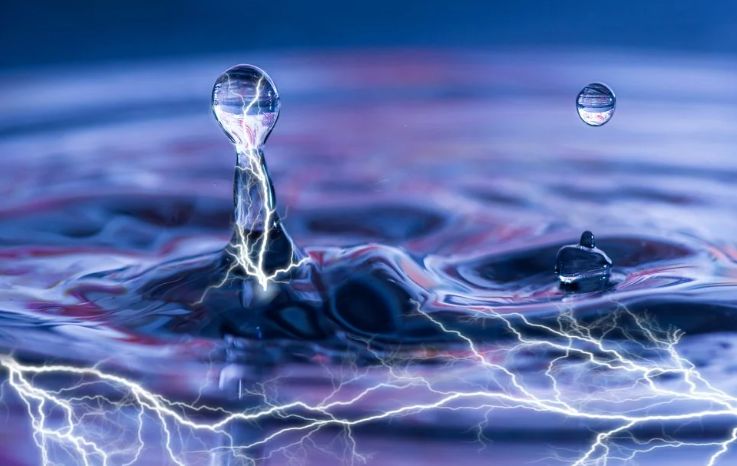
Certain materials like crystals, ceramics, and at times even biological matter (bone, DNA, and proteins), can generate an electrical charge. The effect is seen when the material is put under the influence of some mechanical stress – such as pressure or vibration – this phenomenon is termed as piezoelectricity.
The charge is accumulated on the surface of the material. From there, it can be used for various applications.
Until now, the piezoelectric effect can only be seen in solids. Interestingly, for the first time, researchers at Michigan State University have observed it in liquids as well.
Ionic liquids
Liquid piezoelectric effect was discovered when the team was studying properties of ionic liquids. Which happens to be electrically charged particles.
Generally, large, asymmetric organic cations and smaller, inorganic anions results in ionic liquids.
The organic cations are highly soluble in organic solvents because they contain polar functional groups – hydroxyl, amino, or carboxyl groups. Hence, they not only participate in hydrogen bonding but also in intermolecular interactions with the solvent molecules.
Inorganic anions (in ionic liquids) have weak coordination with the organic cations. Thus, it minimizes unwanted reactions between the cations and anions. Hence, maintain the stability.

Liquid piezoelectric effect
The team observed when pressure (with a piston) is applied to a sample of ionic liquid, the resultant behaviour gave piezoelectric effect.
Another thing that the team observed was the amount of electricity released was proportional to the amount of pressure applied. This also happens to be a hallmark property of piezoelectric materials.
Takeaway
For the time being, researchers were not able to explain why the ionic liquids gave out piezoelectric properties.
It could be that the pressure may have led some form of deformation to the crystalline structure of the material. And this in turn generated an electric charge or voltage.
However, to give out the most specific answer, they plan to go for an in-depth study of the material.
Meanwhile, we feel that the discovery of a liquid piezoelectric is significant because it could open new possibilities such as biomedical sensors, microfluidic devices, and underwater acoustics.
Via: phys.org



